While BLM continues to remove the wild horses from the New Pass/Ravenswood and Augusta Mountain Herd Management Areas (HMA) due to wildfire damage, let’s take a look at another HMA being ”managed” for wildfire recovery…..
The Rattlesnake Herd Management Area (HMA) spans 71,429 public acres and was established in 1983 through the Caliente Management Framework Plan. The “allowable management level” (AML) of wild horses within the Rattlesnake HMA is currently one wild horse.(1)
The Rattlesnake Herd Management Area (HMA) spans 71,429 public acres and was established in 1983 through the Caliente Management Framework Plan. The “allowable management level” (AML) of wild horses within the Rattlesnake HMA is currently one wild horse.(1)
Why only one? Because if BLM establishes in their land use plan that they will manage for wild horses and burros, they cannot “legally” zero it out for wild horse and burro use until the land use plan is changed. In order to get around this obstacle, BLM managers just establish an AML of one until the new land use or resource management plan is developed.
The Rattlesnake AML was set in 2003 at the same time AML was set for 12 Herd Management Areas, all set in the same document, all of which fell within the same area as the 1999 Lincoln County Elk Management Plan and was implemented under a "Categorical Exclusion", which allowed BLM to circumvent required legal analysis of what impacts the elk introductions would have to the area. (2)
In December 2006, the Rattlesnake wild horses were included as part of the “Dry Lake Complex” scheduled removals but no wild horses were found in their protected habitat to remove. (3)
Though very arid with limited water sources, BLM still manages to accommodate livestock grazing. The Rattlesnake Grazing Allotment, encompassing 39,948 public acres in the Herd Management Area, is failing to achieve every BLM rangeland health standard measured. Of course, BLM did not find cattle to be the cause of these failures. (4)
BLM issued a Proposed Decision on September 25, 2007 that authorized 1,180 Animal Unit Months (AUMS) for livestock or 169 cattle for six months out of the year while refusing to answer questions about these exclusive forage allocations.
BLM responded to questions about wild horse allocations with, “This is outside the scope of the EA, which does not address wild horse populations”. As well as, “Other comments also made regarding wild horses, which are also deemed outside the scope of the proposed action for the EA are not discussed further.”
As for what else BLM had to say while they were evaluating the ten-year grazing permit, in addition to referencing wild horses as “feral”, these are direct quotes taken from the environmental assessment BLM issued in July 2007.
“The allotment provides year round habitat for game animals such as mule deer and elk. Elk habitat encompasses the area but the allotment’s location is not high quality habitat for elk. Elk have moved into the area recently, though their current numbers in the area are not known. Elk use was observed at Rattlesnake Spring in 2007. Elk have begun using the fenced spring site for foraging and bedding purposes.”
“Elk use on riparian vegetation inside the spring exclosure was heavy in 2007. As a result, the spring vegetation has not recovered since it was burned in 2002. No livestock use has occurred in the riparian area due to the exclosure fence….Livestock contributed moderate use in the burn seeded area in 2006.”
So the wild horses being removed today are a result of not being allowed the same “moderate use in the burn areas” that livestock are……imagine that.
Questions about the elk population drew this response from BLM:
“The commenter references the Lincoln County Elk Management Plan. This plan is a community based plan, which applied principles of coordinated resource management (CRM) of which BLM participated as a stakeholder. Further comments addressing elk populations, resource degradation, by elk, etc. are not discussed further since BLM does not manage elk populations.”
Isn’t this the same agency that removes wild horses and burros to protect riparian areas? Yet the elk have been documented as degrading the riparian area for the last five years!
Maybe BLM doesn't “manage” elk but they have been mandated to preserve public resources and riparian areas are supposed to be one of the highest priorities in all their management decisions.
After all, wasn’t it these riparian areas and threats to watershed health that caused “experts” to line up and testify to Congress about how they were in mortal danger by the wild horse and burro population, testimony that Congress believed and resulted in 70,000 wild horses and burros being cleansed from our lands over the last five years?
Isn’t this the same agency that removes wild horses and burros to protect riparian areas? Yet the elk have been documented as degrading the riparian area for the last five years!
Maybe BLM doesn't “manage” elk but they have been mandated to preserve public resources and riparian areas are supposed to be one of the highest priorities in all their management decisions.
After all, wasn’t it these riparian areas and threats to watershed health that caused “experts” to line up and testify to Congress about how they were in mortal danger by the wild horse and burro population, testimony that Congress believed and resulted in 70,000 wild horses and burros being cleansed from our lands over the last five years?
(1) BLM 2006 Nevada Herd Area Statistics, Wild Horse & Burro Program
(2) Lincoln County Elk Management Plan, July 1999, pg 4.
(3) BLM Ely Field Office, Gather Summary, Dry Lake Complex and Fire Gathers, December 2006, Courtesy of Benjamin Noyes.
(4) United States Department of the Interior, Bureau of Land Management, Ely Field Office, Caliente Field Station, Preliminary Environmental Assessment # NV-040-07-016, June 2007.

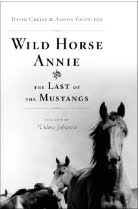








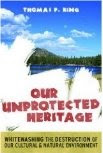



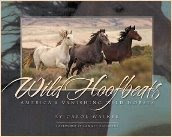




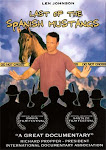





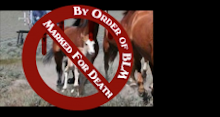

1 comment:
This is another outrage against OUR wild horses. When is it ever going to end and who in D.C. will help end it?? Will Rahall do anything? The BLM is plainly out of control .
Post a Comment